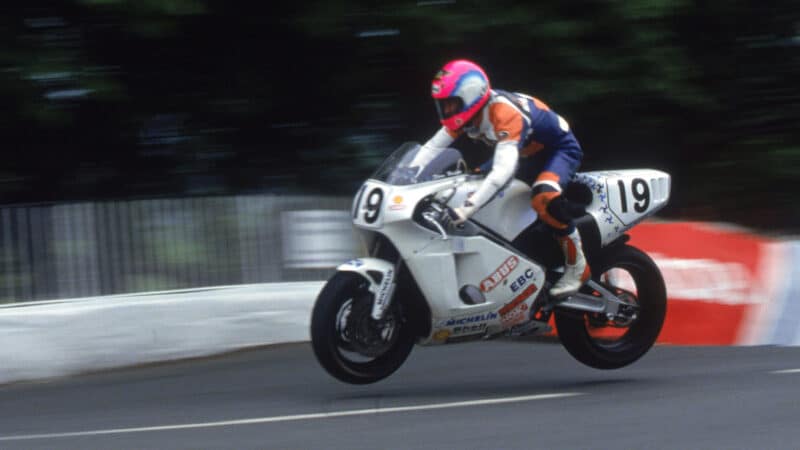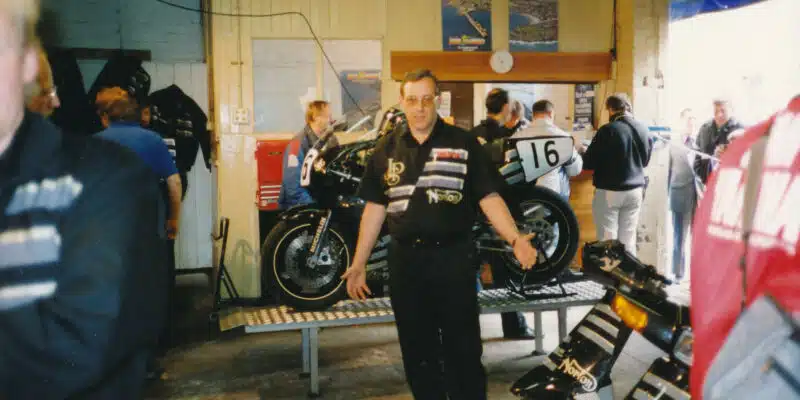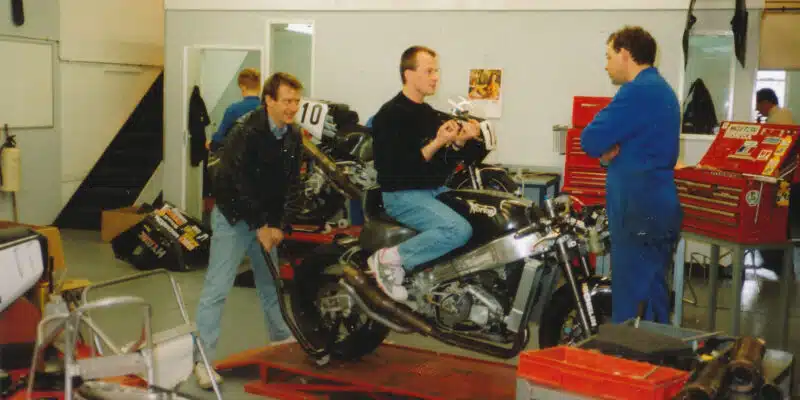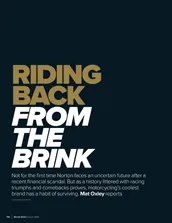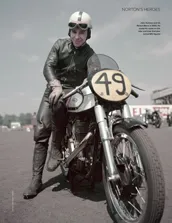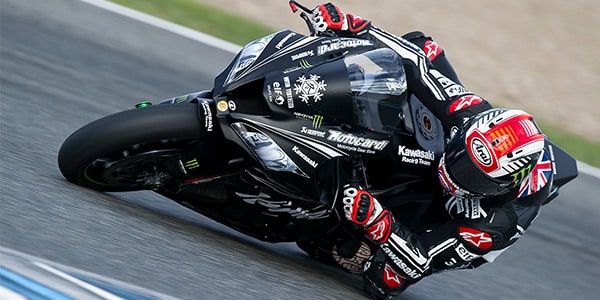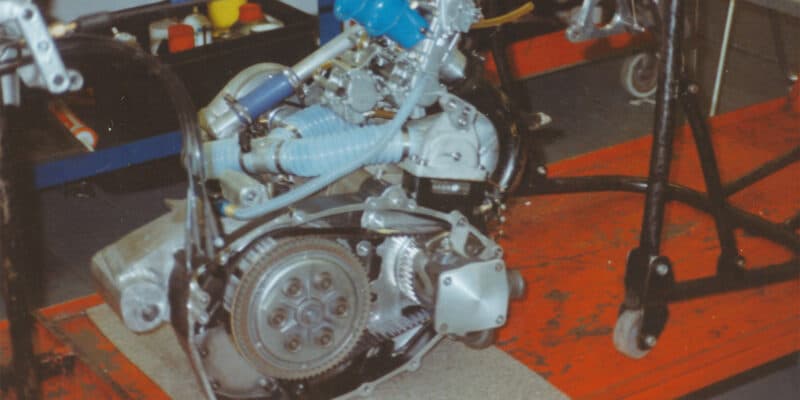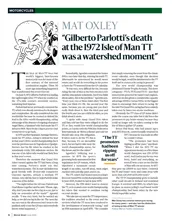“Some people would say the handling wasn’t good and I’d agree because we always had to concentrate on the engine,” Symmons explains. “We made a few chassis adjustments, got to the Island and Steve went out on the first evening of practice and was fastest. We thought ‘my God!’. He came back, made some comments and I asked Ron [Williams, the team’s chassis guru] to let him set up the bike the way he wanted it.”
Norton’s main opposition was Honda’s new hotshot Phil McCallen and Carl Fogarty, riding the 0W-01 originally intended for Hislop.
During practice Norton continued to struggle with fuelling: too lean and the engine would overheat and seize, too rich and the bike wouldn’t even make two laps (75 miles) between fuel stops.
“We were always trying to find a balance between fuel consumption, engine cooling and performance,” says Mehew. “You’d pour in a five-gallon drum of fuel and it’d just lick its lips and say thank you very much. It was a fine line: 22 litres [the tank size] for two laps, 11 litres a lap.
“We had two carburettor settings, one I wasn’t confident of, the other I was. So we went testing at Jurby [a small short circuit in the north of the island used by TT teams for testing] and I asked Steve and Robert if they could run the richer setting and they said the lean setting is better. I said that’s not what I asked you. Steve said, ‘You want me to say I can run the richer setting, don’t you?’. And he said, ‘Yes, I can’.
Practice week was cool and showery, F1 race day dawned warm and bright, just what Norton didn’t want. Hislop’s bike was soon overheating and Dunlop went out with a seized engine. Only after the race did Symmons discover that Dunlop had quietly switched to the leaner carburettor setting, thinking it would give him race-winning speed.
Hislop survived to finish second after his mechanics removed the front mudguard to improve cooling. McCallen won the race – his maiden TT victory – after Fogarty went out with a broken gearbox.
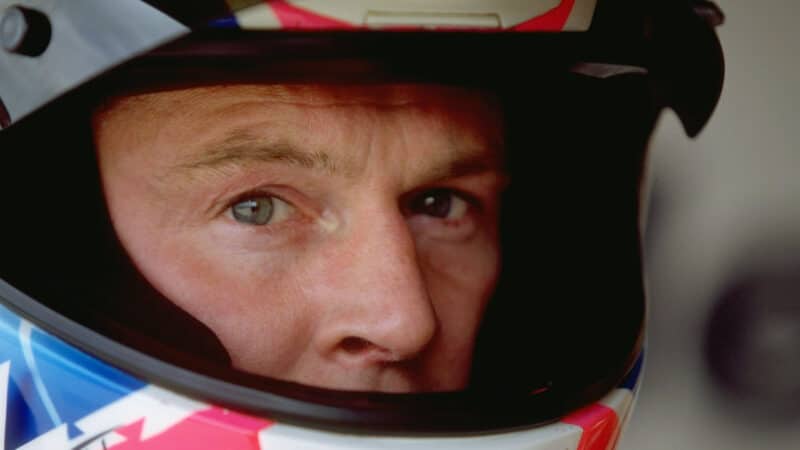
Hislop was an exceptionally gifted racer, both on short and street circuits. In 2002 he lapped Donington Park on a Ducati superbike faster than Valentino Rossi managed on a MotoGP bike! He was killed in a helicopter accident the following year
Getty Images
Now Norton had six days to get the bike right for the Senior – Hislop had endured more than a few scary moments during the F1 race.
“I was hitting bumps, getting lifted out of my seat and the wind at those speeds was threatening to blow me off the back of the bike,” he wrote.
A taller windscreen and wider handlebars were the solution.
“The Norton’s torque would pull the back down and then the bike would shake its head, it was just an animal,” recalls Nation. “The plus side was the speed – you were absolutely cooking along.”
“There was definitely something about Steve that day”
Nation had huge respect for Hislop’s TT riding ability.
“I know the Isle of Man like my favourite album, but Steve was always so smooth and accurate, that’s where he got his speed from.”
By Friday the tension was huge.
“It was incredible – everything was on for the Senior because we knew it was that or nothing,” says Mehew.
“I wouldn’t say Steve seemed confident but there was definitely something about him that day,” remembers Symmons. “After the F1 I’d slept better, whereas for the previous few weeks my stomach had been in a right state. Running a team at the TT is always nerve-wracking: you’ve got the added strain that when your rider goes off at the start you don’t know if you’ll ever see him again.”
Fogarty set a blazingly fast pace to complete the first lap of the Senior a second ahead. By Ramsey on lap two Hislop had inched into the lead and pushed harder than ever over the Mountain to stretch his advantage to just under three seconds as they came in for their first fuel stops.
